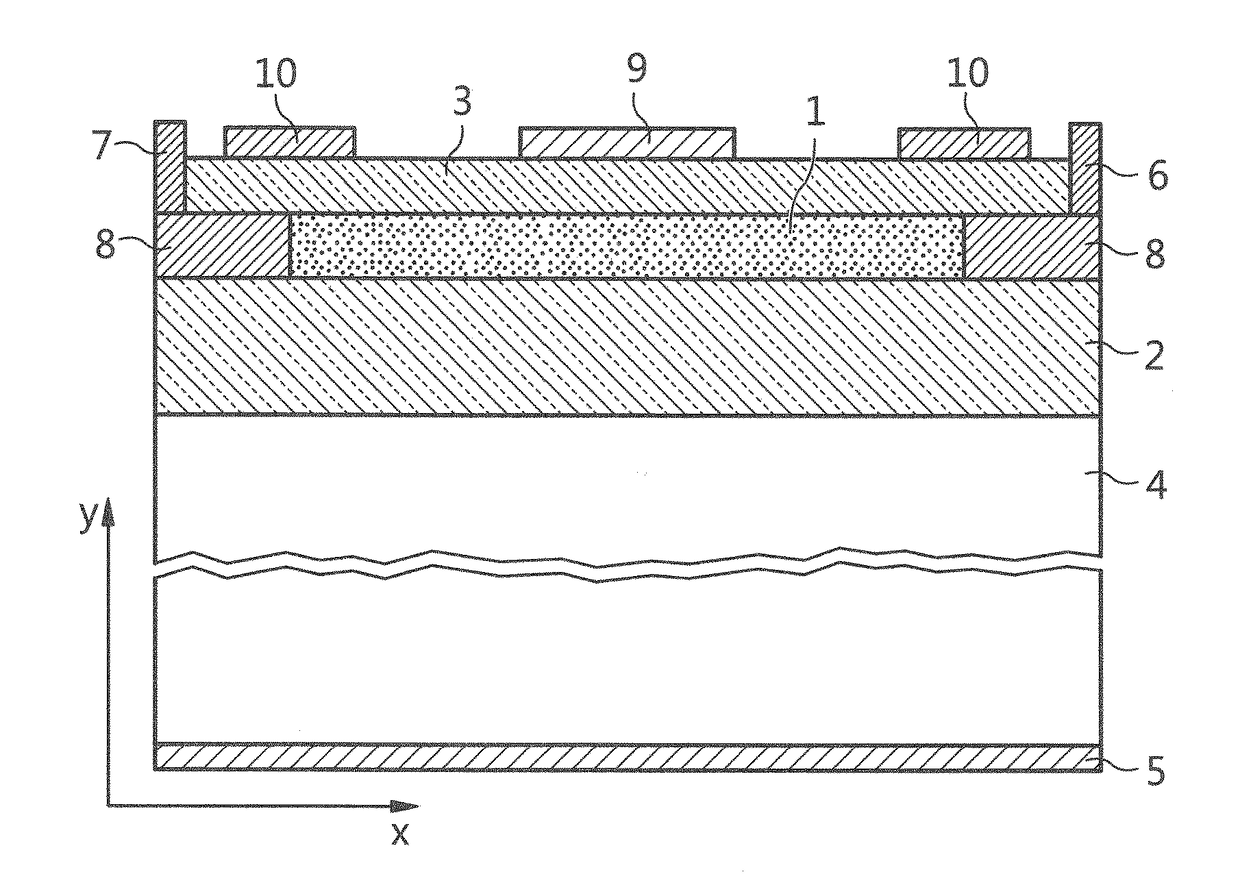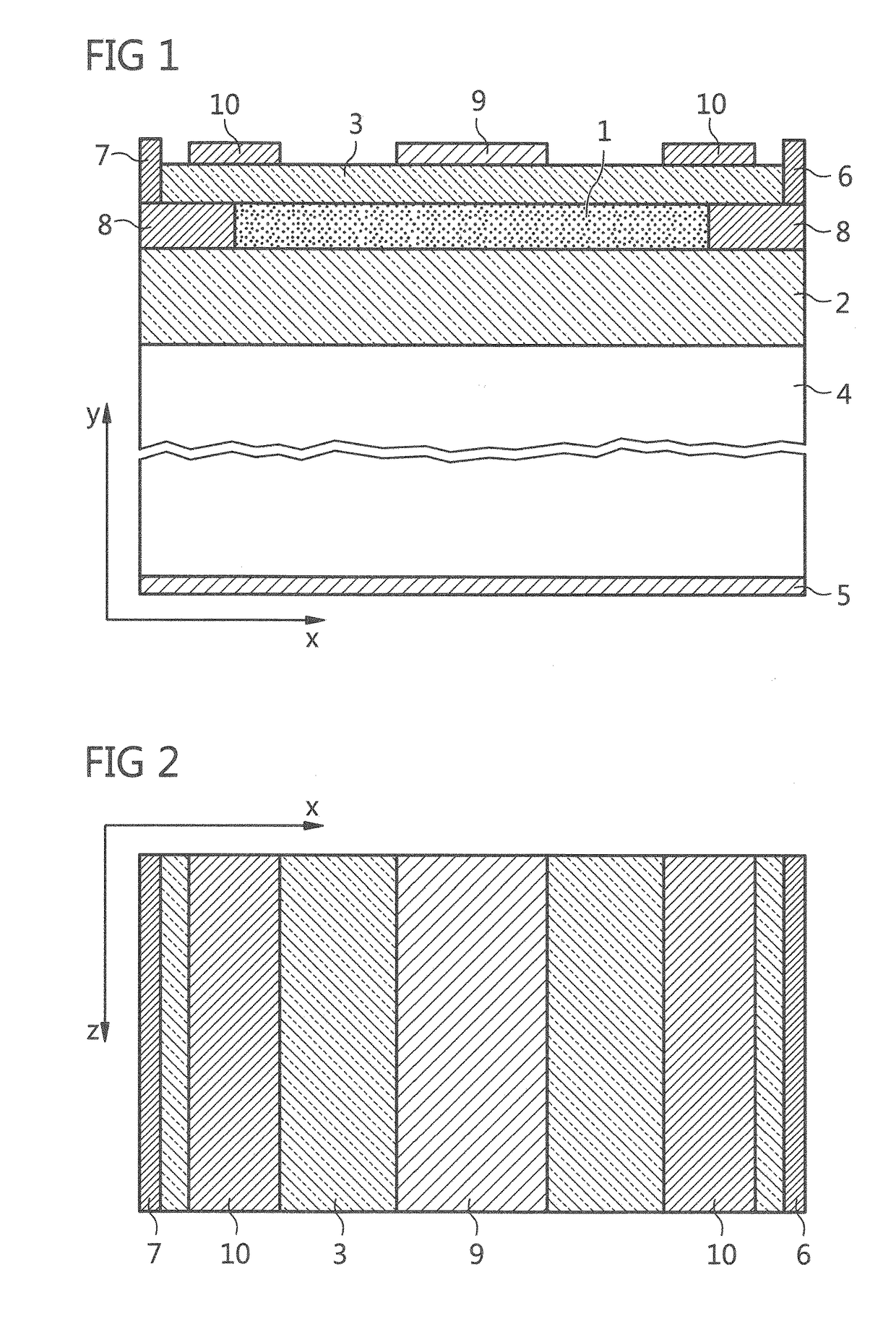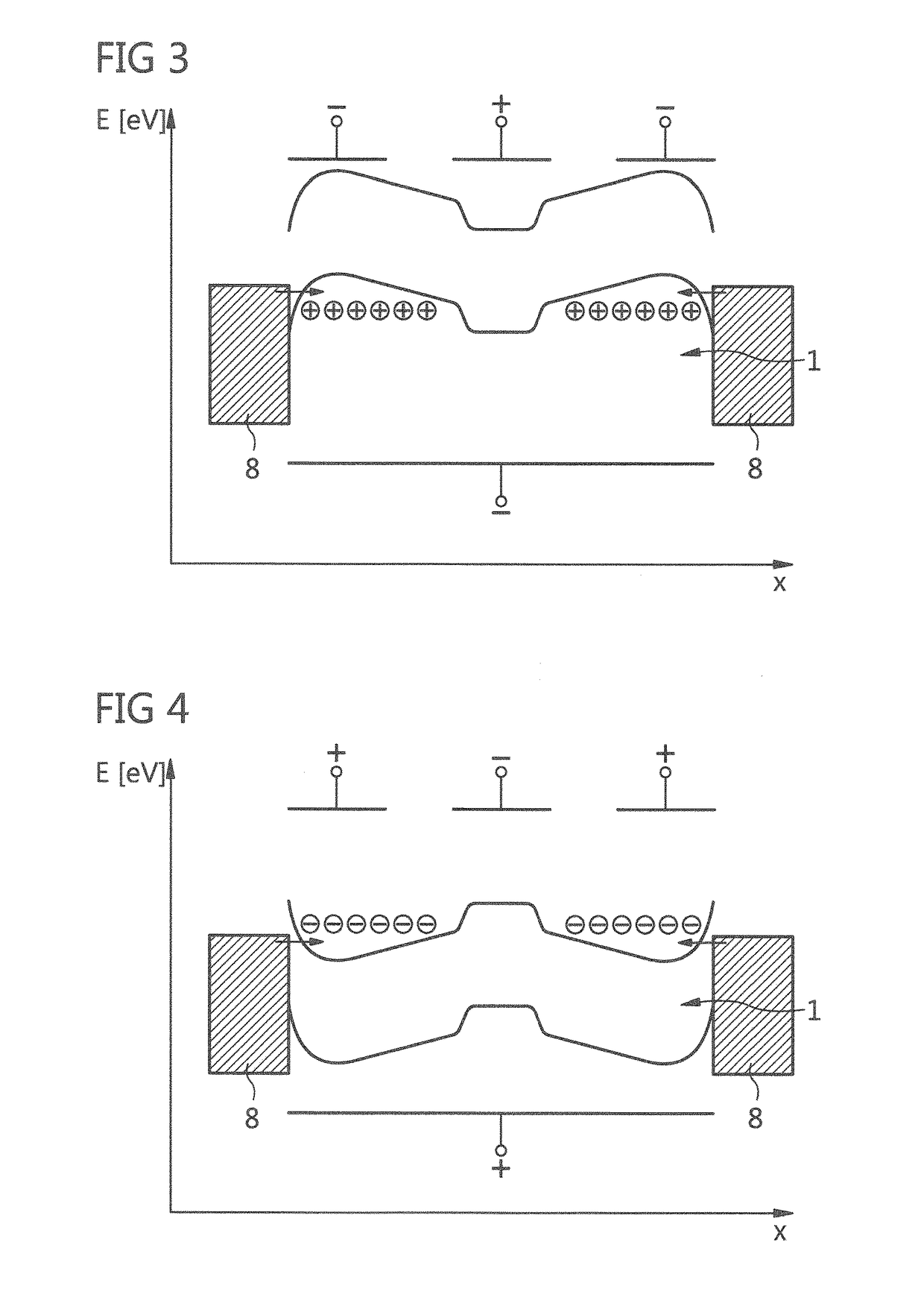Method for operation of a field effect transistor arrangement
a field effect transistor and arrangement technology, applied in the direction of transistors, semiconductor devices, electrical equipment, etc., can solve the problems of high cost, high complexity, power loss and heat that must be dissipated, etc., to achieve short switching times, high switching speeds, and the effect of reducing the distance between the control electrode and the underside of the planar channel layer
- Summary
- Abstract
- Description
- Claims
- Application Information
AI Technical Summary
Benefits of technology
Problems solved by technology
Method used
Image
Examples
Embodiment Construction
[0047]A field effect transistor arrangement schematically illustrated in FIGS. 1 and 2 has a planar channel layer 1 made of an undoped silicon material. The planar channel layer 1 is arranged on an upper side of an electrically insulating substrate layer 2, which consists of or comprises silicon oxide. The planar channel layer 1 is covered by an electrically insulating electrode insulation layer 3, which likewise consists of or comprises silicon oxide. Below substrate layer 2 a carrier substrate 4, and on the entire surface of the underside thereof, an electroconductively contactable adjusting electrode 5 are arranged.
[0048]On two opposite side edges of planar channel layer 1, an electroconductively contactable source electrode 6 and a drain electrode 7 are arranged, which protrude through electrode insulation layer 3, each into a contact region 8 that borders the planar channel layer laterally. Contact region 8 is embodied as a midgap Schottky barrier and is produced from nickel si...
PUM
 Login to View More
Login to View More Abstract
Description
Claims
Application Information
 Login to View More
Login to View More - R&D
- Intellectual Property
- Life Sciences
- Materials
- Tech Scout
- Unparalleled Data Quality
- Higher Quality Content
- 60% Fewer Hallucinations
Browse by: Latest US Patents, China's latest patents, Technical Efficacy Thesaurus, Application Domain, Technology Topic, Popular Technical Reports.
© 2025 PatSnap. All rights reserved.Legal|Privacy policy|Modern Slavery Act Transparency Statement|Sitemap|About US| Contact US: help@patsnap.com



